Microstructural Evolution of the Rail Steels Manufactured by Hanyang Iron Works
Abstract
:1. Introduction
2. Experimental Procedures
3. Results and Discussion
3.1. Chemical Composition
3.2. Microstructures
4. Conclusions
- (1).
- The rail steel 1904 has ferrite with a small amount of pearlite, the rail steels 1911 and 1921 have reticular ferrite and pearlite and the rail steels 1917 and 1919 have full pearlite.
- (2).
- The pearlite grain gradually refines, and the average grain diameter of pearlite was smallest in the rail steel 1919.
- (3).
- The rail steels 1917 and 1919 hold a higher proportion of low-angle grain boundaries and local misorientation with angles lower than 1°, while a lower proportion of grain boundary misorientation was in the range of 40~50°.
Author Contributions
Funding
Acknowledgments
Conflicts of Interest
References
- Liu, L. A study on the harm of sodiers and the railway crisis in Beiyang period: Using Hankou-Beijing railway as an example. J. Southwest Jiaotong Univ. 2019, 20, 73–81. [Google Scholar]
- Ding, Y. Zhang Zhi-dong and the railway construction of China. Tangdu J. 2004, 20, 152–155. [Google Scholar]
- Zhu, C. Zhang Zhi-dong and the construction of Luhan railroad. J. Guangxi Norm. Univ. 2003, 39, 109–118. [Google Scholar]
- Feuerwerker, A. China’s Early Industrialization: Sheng Hsuan-Huai (1844–1916) and Mandarin Enterprise; China Social Sciences Press: Beijing, China, 1990. [Google Scholar]
- Fang, Y.; Qian, W. The Hanyang Iron Works and China’s early railway construction: The characters of China’s early iron and steel industrialization. Chin. J. Hist. Sci. Technol. 2005, 26, 312–322. [Google Scholar]
- Zhang, S. Abandoning shell furnace in Hanyang Iron plant revisted. J. Hubei Polytech. Univ. 2018, 35, 1–11. [Google Scholar]
- Li, H. The Study on the Developmental History of Iron and Steel Industry in Modern China (1840~1927); Soochow University: Suzhou, China, 2010. [Google Scholar]
- Chen, D. The Study on Railway Rail Production in Late Qing Dynasty (1889–1911); Soochow University: Suzhou, China, 2013. [Google Scholar]
- Dai, L. The Hankou-Daye-Pingxiang company’s steel sales and China’s modern steel market (1908–1927). Mod. Chin. Hist. Stud. 2005, 6, 39–74. [Google Scholar]
- Xiao, Z. Overview of the production and use of steel rails in China and developments in foreign rail production. Wuhan Iron Steel Corp. Technol. 1979, 4, 62–77. [Google Scholar]
- Ren, Y.; Zhang, Y.; Li, Y.; Wang, W. Comparative study on rail performance over a century. China Railw. 2021, 11, 102–107. [Google Scholar]
- Fang, Y.; Dong, H. Modern Chinese Steel Rails: Technical History and Cultural Relic; Metallurgical Industry Press: Beijing, China, 2020. [Google Scholar]
- National Railway Administration of the People’s Republic of China. Rails—Part 1: 43 kg/m~75 kg/m Rails; China Railway Press: Beijing, China, 2020. [Google Scholar]
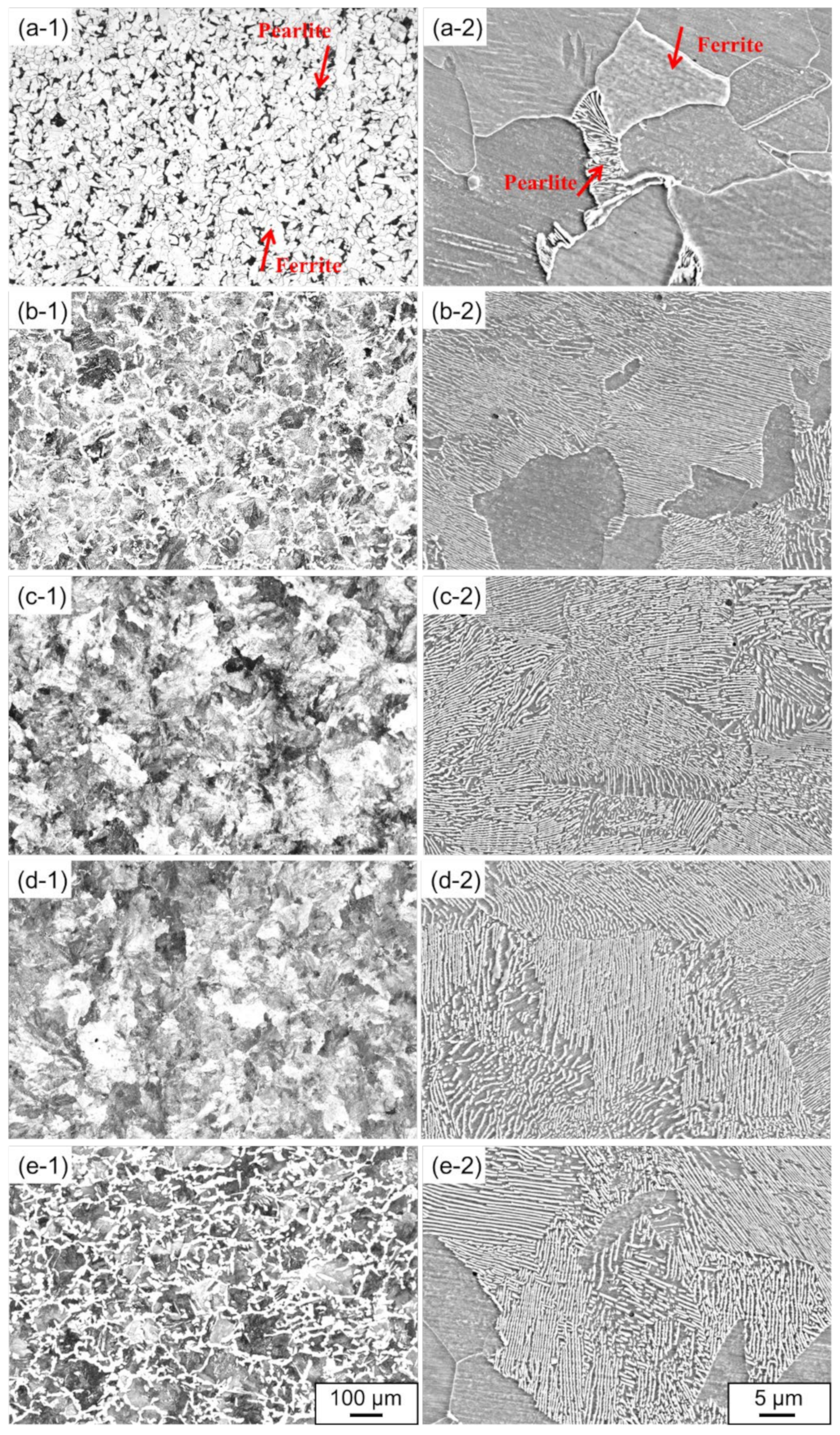

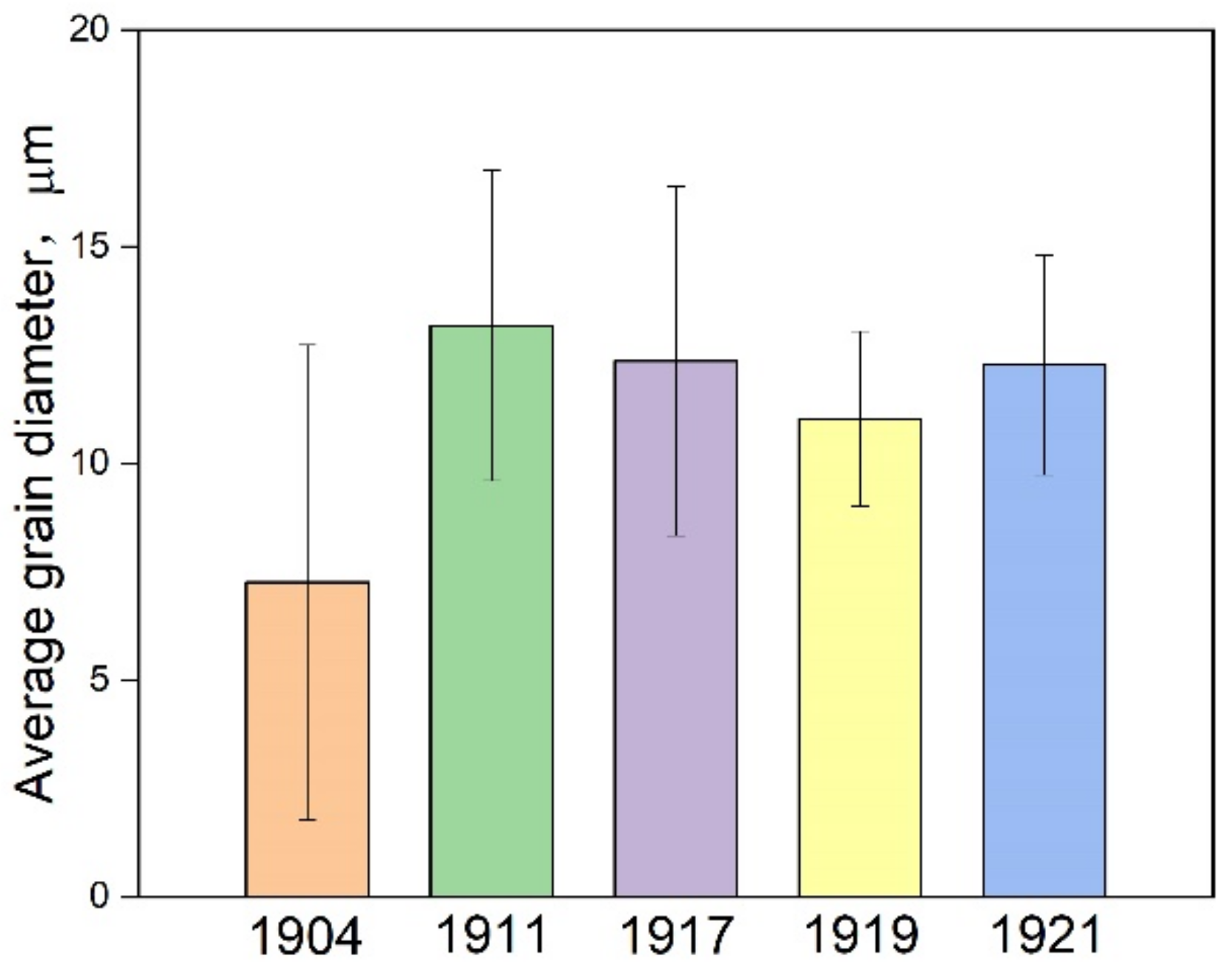
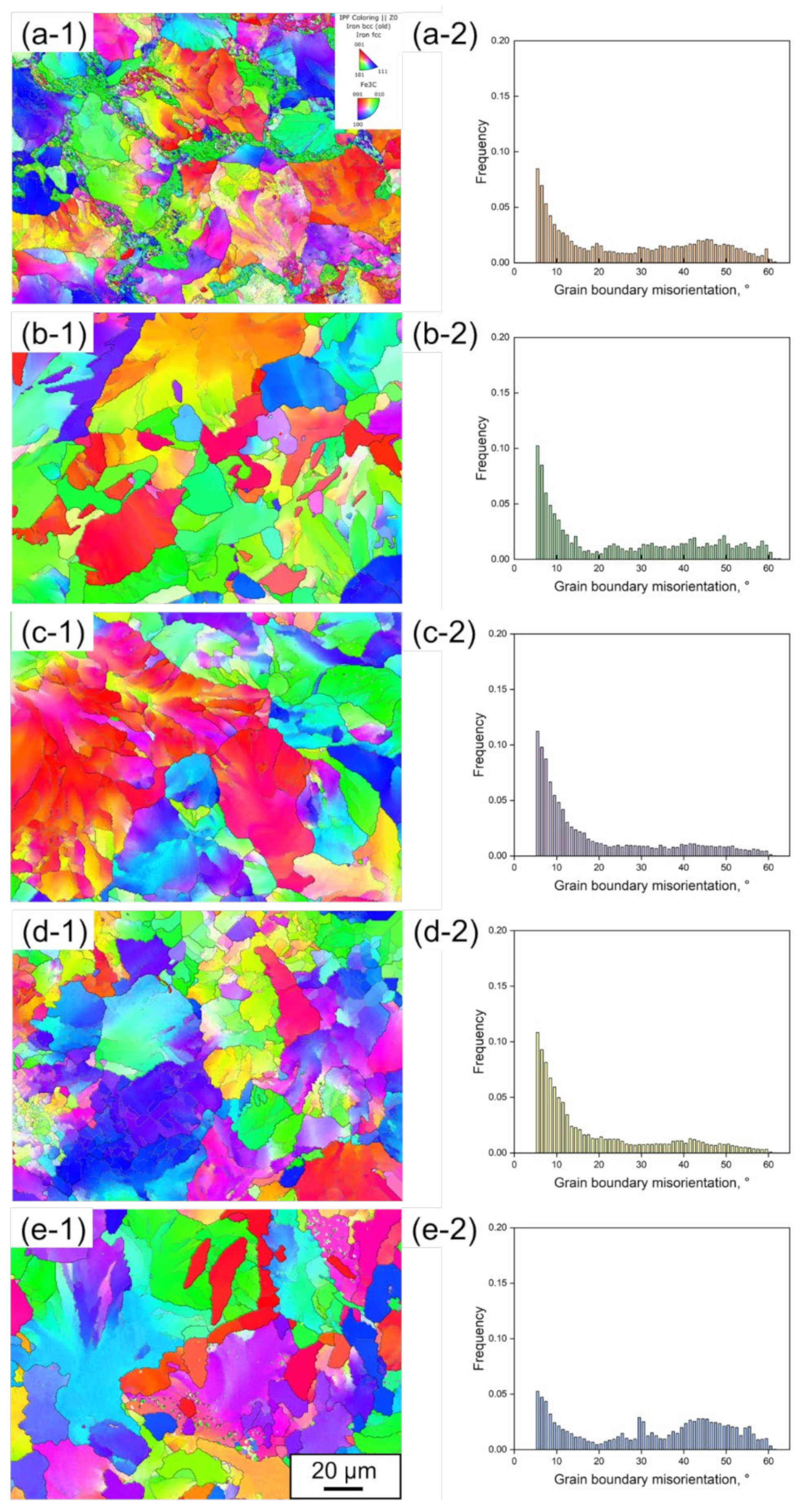
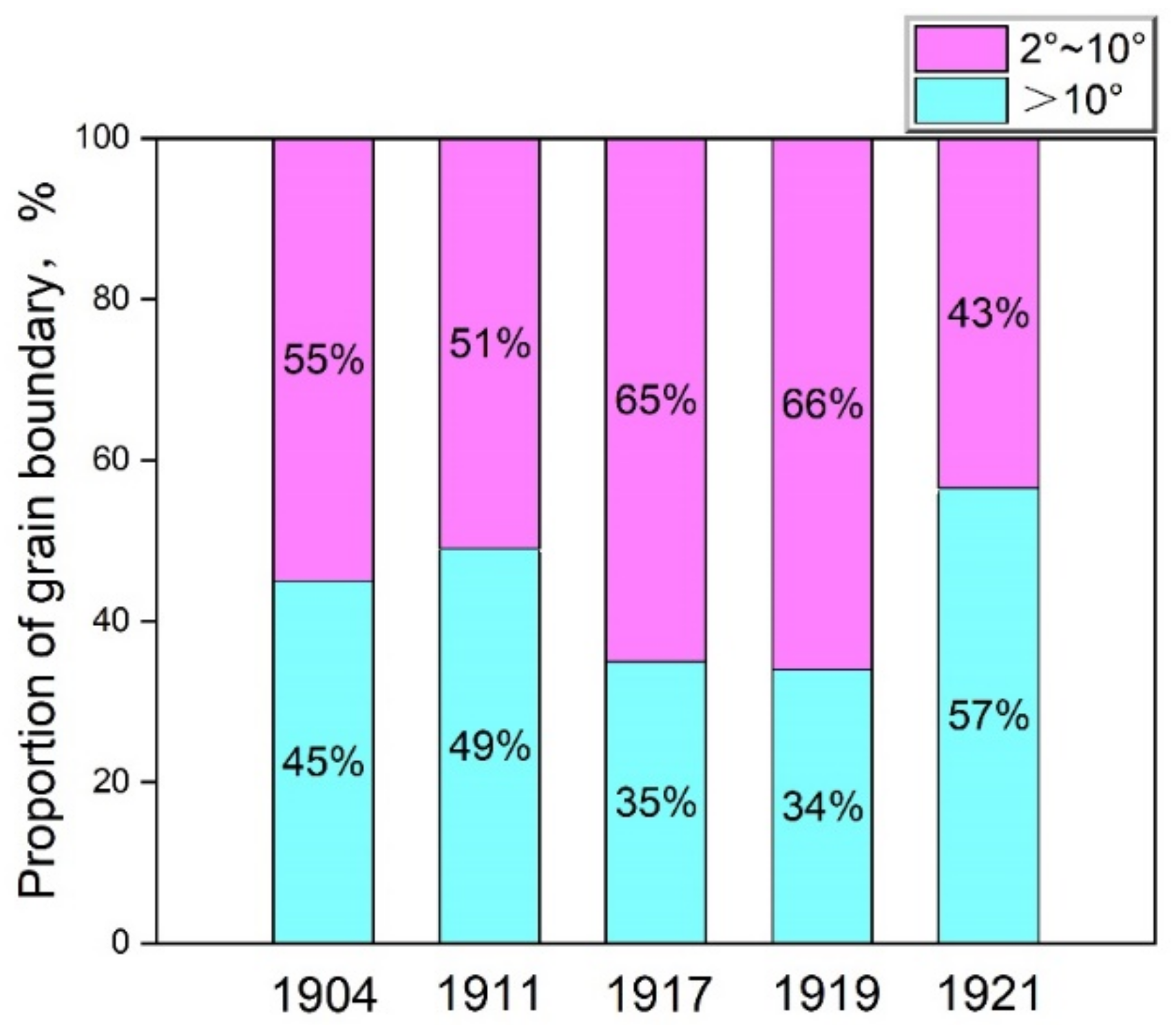
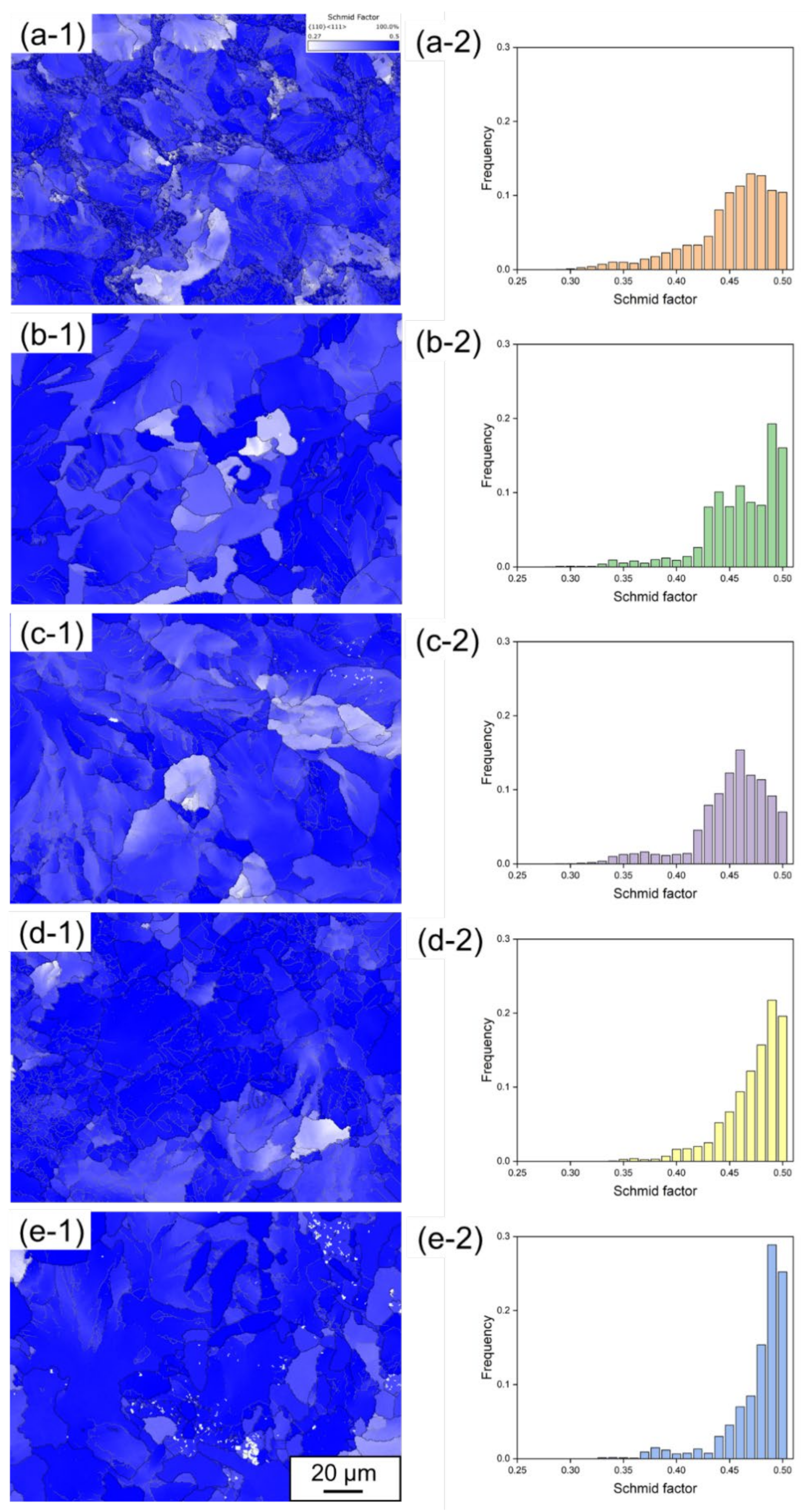

| Year | C | Si | Mn | P | S | Cr | Ni | Cu |
|---|---|---|---|---|---|---|---|---|
| 1904 | 0.15 | 0.02 | 0.61 | 0.173 | 0.049 | 0.006 | 0.033 | 0.16 |
| 1911 | 0.53 | 0.08 | 0.65 | 0.072 | 0.084 | 0.035 | 0.029 | 0.45 |
| 1917 | 0.68 | 0.08 | 0.52 | 0.027 | 0.045 | 0.027 | 0.021 | 0.58 |
| 1919 | 0.67 | 0.08 | 0.50 | 0.026 | 0.034 | 0.027 | 0.022 | 0.58 |
| 1921 | 0.49 | 0.04 | 0.46 | 0.036 | 0.038 | 0.049 | 0.032 | 0.54 |
Publisher’s Note: MDPI stays neutral with regard to jurisdictional claims in published maps and institutional affiliations. |
© 2022 by the authors. Licensee MDPI, Basel, Switzerland. This article is an open access article distributed under the terms and conditions of the Creative Commons Attribution (CC BY) license (https://creativecommons.org/licenses/by/4.0/).
Share and Cite
Man, T.; Zhou, Y.; Dong, N.; Liu, T.; Dong, H. Microstructural Evolution of the Rail Steels Manufactured by Hanyang Iron Works. Materials 2022, 15, 5488. https://doi.org/10.3390/ma15165488
Man T, Zhou Y, Dong N, Liu T, Dong H. Microstructural Evolution of the Rail Steels Manufactured by Hanyang Iron Works. Materials. 2022; 15(16):5488. https://doi.org/10.3390/ma15165488
Chicago/Turabian StyleMan, Tinghui, Yihao Zhou, Nan Dong, Tengshi Liu, and Han Dong. 2022. "Microstructural Evolution of the Rail Steels Manufactured by Hanyang Iron Works" Materials 15, no. 16: 5488. https://doi.org/10.3390/ma15165488







